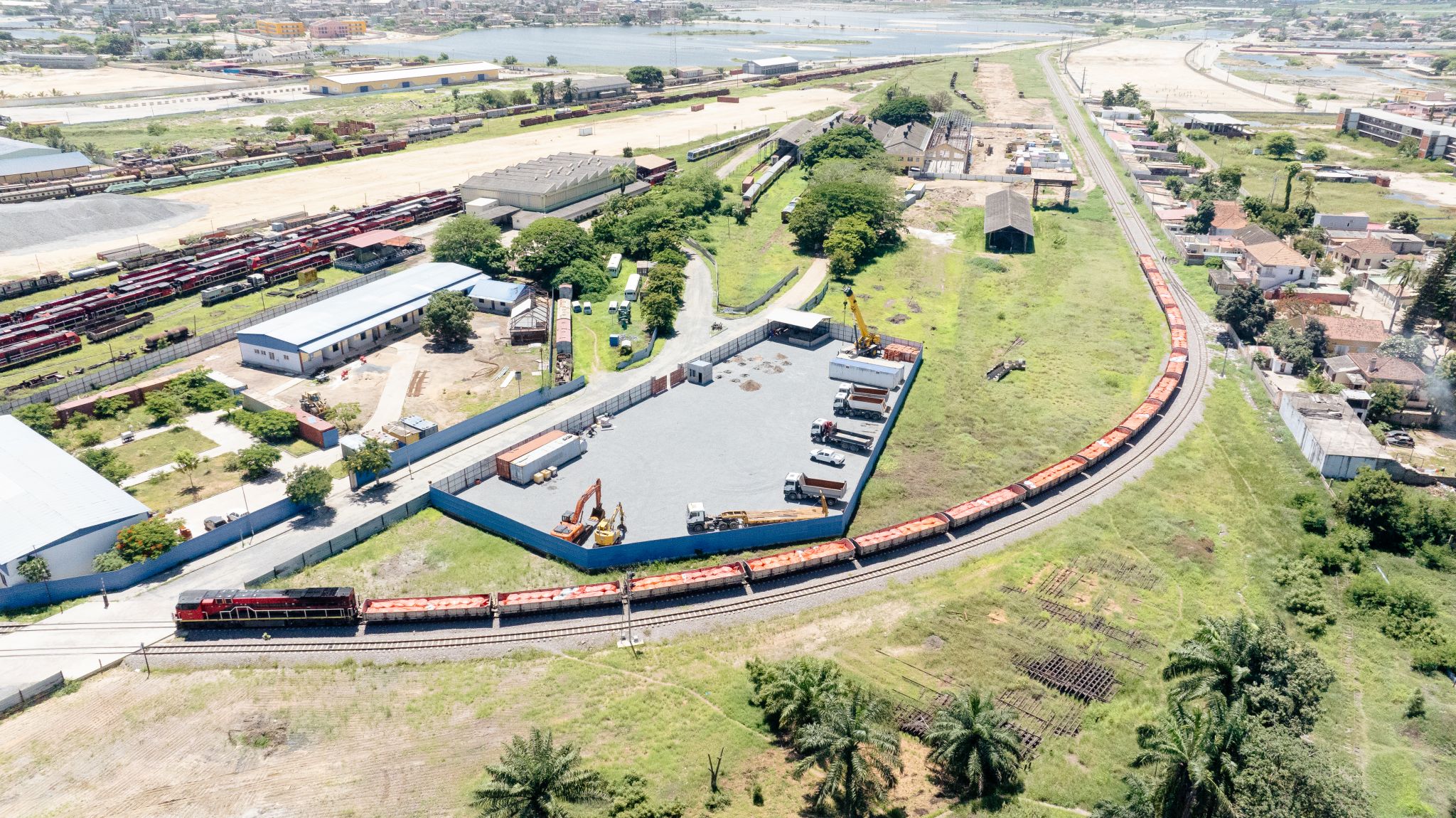
Approximately, 1,100 mt of copper concentrate were loaded onto two trains at the Impala Terminals warehouse. Both trains left for the Atlantic Ocean port of Lobito on December 23, 2023, and reached their destination 8 days later, on December 31, 2023.
The first shipment of copper concentrate from the Ivanhoe Mines’ Kamoa-Kakula copper complex arrived by rail at the Atlantic Ocean port of Lobito, in Angola. The first shipment is a part of the trial tonnage under the memorandum of understanding (MOU) signed between Lobito Atlantic International SARL and Kamoa Copper S.A. on August 18, 2023.
The rail line, linking the Democratic Republic of the Congo (DRC) Copperbelt to the port of Lobito in Angola, known as Lobito Corridor, extends 1,289 km east, from the port to the Angola-DRC border town of Luau. The line then extends a further 450 km east into the DRC, on the Société Nationale des Chemins de fer du Congo (SNCC) rail network, to Kolwezi. The line passes within 5 km of the Kamoa-Kakula copper complex license boundary and through the Western Foreland Exploration Project.
The previously announced trial shipment is for the transportation of up to 10,000 metric tons (mt) of copper concentrate from Kamoa-Kakula’s Phase 1 and 2 concentrators, along the Lobito Corridor. Information will be gathered from the trial shipment on greenhouse gas (GHG) savings, transit times, operating costs and other factors. An initial shipment of approximately 1,110 mt of Kamoa-Kakula’s copper concentrate was loaded on rail wagons at the Impala Terminals warehouse in Kolwezi and departed west along the Lobito Corridor on December 23, 2023. The shipment arrived at the port of Lobito 8 days later on December 31, 2023.
Currently, Kamoa-Kakula trucks its copper concentrates by road across sub-Saharan Africa to the ports of Durban in South Africa and Dar es Salaam in Tanzania, as well as Beira in Mozambique and Walvis Bay in Namibia. In 2023, approximately 90% of Kamoa-Kakula’s concentrates were shipped to international customers from the ports of Durban and Dar es Salaam, where an average round-trip takes between approximately 40 and 50 days. The distance from Kamoa-Kakula to the port of Lobito is approximately half that compared with the port of Durban, and transportation by rail is both quicker and significantly less energy-intensive.
Once fully active, the Lobito Corridor is expected to significantly improve the logistics costs and reduce the Scope 3 emissions carbon footprint of Kamoa-Kakula copper exports. The development of Ivanhoe’s current and future copper discoveries within the Western Foreland basin will also greatly benefit from the Lobito Corridor.
“Our first trial shipment is an important milestone on the path to creating a new supply chain linking the Central African Copperbelt to world markets,” said Ivanhoe Mines’ Founder and Executive Co-Chairman, Robert Friedland. “Establishing a reliable, modern rail link to the port of Lobito in Angola will have transformational benefits for the people of the DRC, Angola and Zambia. Steel wheels going downhill on steel rails, from over 3,000 feet elevation at Kamoa-Kakula down to sea level at Lobito, will lower the cost and carbon footprint associated with exporting our copper anodes. Further improvements are possible through the use of technology, such as battery-electric locomotives, which are capable of generating electricity as they go downhill.”






